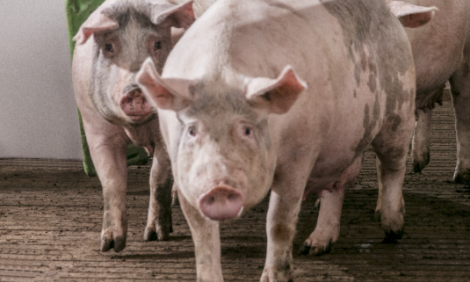



Using frost-damaged soybeans in swine diets
SOUTH DAKOTA – Swine operations may provide an alternate market for using green or frost-damaged soybeans, a South Dakota State University specialist said.
SDSU Extension Swine Specialist said using frost-damaged soybeans in swine diets is an option for swine producers to consider if this year’s cool temperatures prevent a crop from making it to full maturity, or if the region gets an early frost.
“Since frost-damaged soybeans are often discounted at the elevator, pigs provide an alternate market for them,“ Thaler said. “As long as the green beans are round and not too shriveled, the main difference between them and normal soybeans is that the green beans contain more chlorophyll than brown ones. “
Research conducted at the Southeast Research Farm near Beresford in 1991 demonstrated that frost-damaged soybeans have the same feeding value as regular soybeans. When extruded frost-damaged soybeans were used as the sole protein source, gain and carcass quality were unaffected.
Due to the high fat level (18 percent) in extruded soybeans, the pigs fed the frost-damaged soybean diets actually had improved feed efficiencies (7 percent). Since both green and normal beans contain ant-nutritional factors, both must be heat-treated, typically extruded, before being fed to pigs.
When calculating the economics of replacing soybean meal with extruded frost damaged soybeans, all associated costs and benefits need to be included. Those include extrusion costs (approximately $40/ton); more pounds of frost-damaged soybeans (38 percent protein) than soybean meal (44 or 46.5 percent protein) to reach the same protein level; transportation costs to and from the extruder; 8 percent product loss/shrink during extrusion; 8-10 percent improvement in feed efficiency due to the extra fat; and any potential storage costs.
“As long as the beans are not very shriveled, contain no mycotoxins, and are properly extruded, frost-damaged soybeans will work well for all classes of swine. It simply becomes a matter of which protein source (soybean meal or frost-damaged soybean) is cheaper.
To read the feature “Using frost-damaged soybeans in livestock rations,” Click Here
Source: South Dakota State University Extension Service - 10th September 2004






